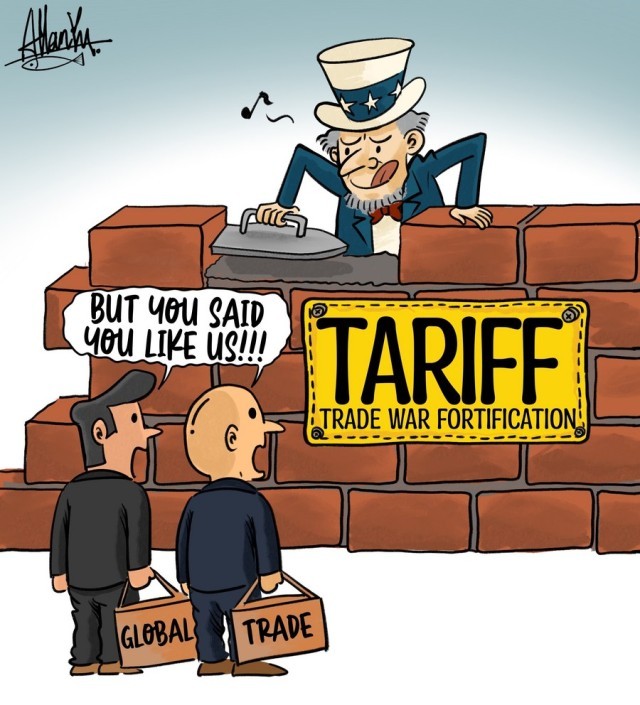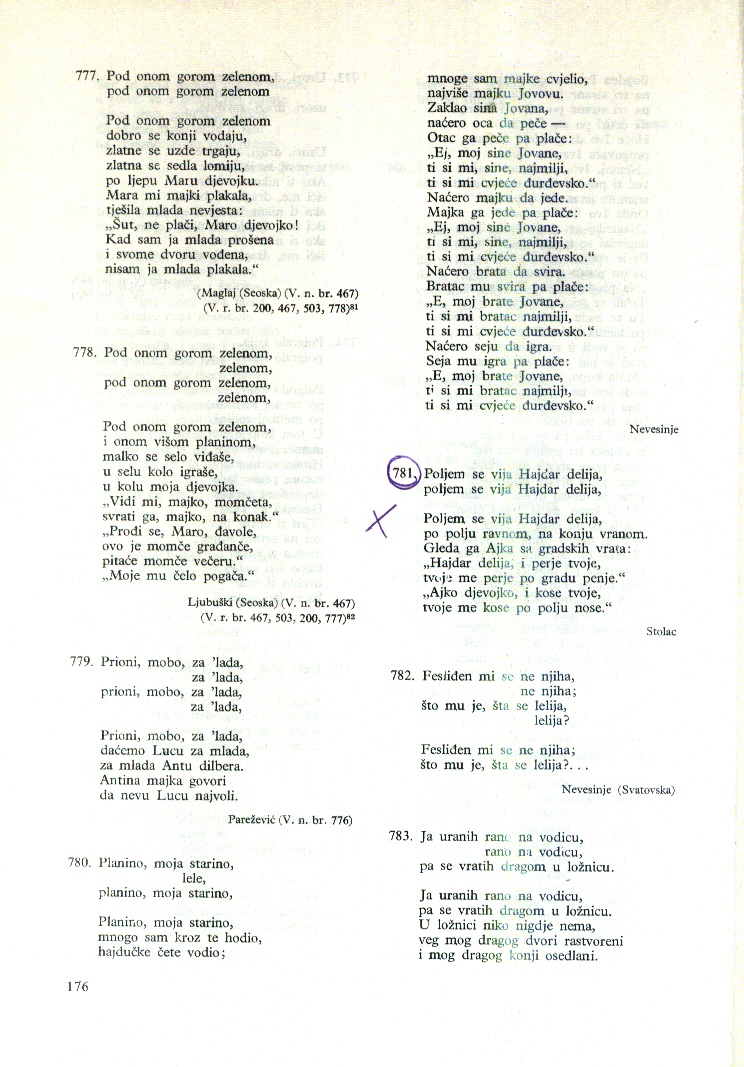Exclusive Report: Trump's Approach To Reducing Automotive Tariff Impact

Table of Contents
Negotiation and Bilateral Trade Deals as a Primary Strategy
President Trump's administration prioritized negotiation and bilateral trade deals as a primary strategy to reduce the impact of automotive tariffs. This approach contrasted sharply with multilateral agreements, reflecting a broader shift in US trade policy.
Renegotiation of NAFTA (USMCA):
The renegotiation of the North American Free Trade Agreement (NAFTA), resulting in the United States-Mexico-Canada Agreement (USMCA), was a cornerstone of Trump's automotive tariff mitigation strategy. The renegotiation aimed to reduce trade barriers and address the automotive sector's concerns, particularly regarding rules of origin and content requirements for vehicles to qualify for tariff-free treatment.
- Reduced tariffs on certain auto parts: USMCA included provisions that gradually reduced tariffs on specific auto parts traded between the three countries.
- Rules of origin changes: Stricter rules of origin were implemented, requiring a higher percentage of vehicle content to be sourced from within North America to avoid tariffs. This aimed to boost domestic production.
- Increased investment commitments: The agreement included commitments from each country regarding investments in the automotive sector, intending to stimulate economic growth and job creation.
However, the USMCA's effectiveness in fully mitigating the impact of automotive tariffs remains debated. While it streamlined some trade flows, the stricter rules of origin presented challenges for automakers reliant on global supply chains.
Bilateral Deals with Specific Countries:
In addition to USMCA, the Trump administration pursued bilateral agreements with individual countries to reduce or eliminate automotive tariffs. These efforts included negotiations with Japan and South Korea.
- Examples of bilateral deals: While specific details varied, these deals often involved commitments to increase imports of US-made vehicles in exchange for reduced tariffs on certain automotive products from the partner country.
- Tariff reductions achieved: The extent of tariff reductions achieved through bilateral agreements varied considerably, depending on the specific negotiations and the leverage each country held.
- Challenges faced in negotiations: Negotiating bilateral deals proved challenging, as each country held different economic and political priorities. Reaching mutually beneficial agreements often required significant compromises. The effectiveness of these bilateral agreements, compared to the broader impact of tariffs, is still being assessed.
Use of Section 232 National Security Exemptions
The Trump administration invoked Section 232 of the Trade Expansion Act of 1962, citing national security concerns, to justify the imposition of automotive tariffs. This controversial move allowed the administration to circumvent normal trade dispute resolution processes.
The Justification for Section 232:
The national security argument centered on the claim that the US automotive industry was vulnerable to foreign competition, potentially compromising national security. This justification was met with significant skepticism from international trading partners and economists.
- Key arguments used: The administration argued that a weakened US automotive industry would impair the country's ability to produce essential vehicles for military and civilian use during emergencies.
- Challenges to the national security claim: Critics argued that the economic rationale behind the tariffs was more significant than the national security justification, leading to accusations of protectionism.
Granting of Exemptions to Specific Companies/Countries:
Despite imposing tariffs, the Trump administration granted exemptions to specific companies and countries under Section 232. This process was criticized for its lack of transparency and apparent inconsistencies.
- Companies receiving exemptions: Certain automakers or parts suppliers received exemptions, often after lobbying efforts and demonstrating dependence on foreign supplies.
- Reasoning behind exemptions: The reasons for granting exemptions varied, ranging from reliance on essential foreign inputs to concerns about the potential disruption of domestic supply chains.
- Impact on the overall tariff regime: The granting of exemptions undermined the intended impact of the tariffs, highlighting the complexities and inconsistencies within the administration’s approach.
The Role of Domestic Industry Support and Incentives
Alongside trade negotiations, the Trump administration pursued policies to support the domestic automotive industry through various incentives and initiatives.
Incentivizing Domestic Production:
The administration explored several avenues to incentivize domestic auto production, aiming to reduce reliance on foreign imports and mitigate the impact of tariffs.
- Specific incentives offered: These incentives included potential tax breaks, subsidies for research and development, and investments in infrastructure related to auto manufacturing.
- Their effectiveness in reducing tariff impact: The effectiveness of these incentives in mitigating the impact of tariffs was limited, as their influence was overshadowed by the broader global economic context and the ongoing trade disputes.
- Long-term consequences: The long-term consequences of these incentives are still being assessed. They may have stimulated some domestic production, but their overall impact on the sector’s long-term competitiveness remains unclear.
Job Creation and Investment Promises:
A significant component of the Trump administration's approach involved promises of job creation and increased investment in the US automotive industry.
- Job creation claims vs. reality: The actual impact on job creation and investment varied, with mixed results. While some investments and job growth occurred, it was difficult to directly link these outcomes solely to the administration's policies.
- Investment figures: While some investment figures were reported, their direct correlation to the policies implemented remains debatable.
- Analysis of success/failure: An accurate assessment of success or failure requires analyzing a multitude of factors beyond just the tariff mitigation strategies.
Conclusion
The Trump administration employed a multifaceted approach to reduce the automotive tariff impact, utilizing negotiation, Section 232 exemptions, and domestic industry support. While bilateral deals and some exemptions offered limited relief, the overall success of these strategies remains debatable. The controversial use of Section 232 and the uneven implementation of domestic incentives highlight the complexities and inconsistencies of this approach. The lasting impact on the automotive industry and broader US trade relations is a subject of ongoing study and debate.
Key Takeaways: The administration's reliance on bilateral deals, the controversial application of Section 232, and the mixed results of domestic industry support programs are crucial aspects to understand.
Call to Action: For further analysis on the complexities of Trump’s approach to automotive tariff impact, explore [link to relevant resource]. Understanding these strategies is crucial for navigating future trade policies and their effect on the automotive sector.

Featured Posts
-
 Zdravkove Prve Ljubavi Prica O Pjesmi Kad Sam Se Vratio
May 01, 2025
Zdravkove Prve Ljubavi Prica O Pjesmi Kad Sam Se Vratio
May 01, 2025 -
 Boulangerie Normande Un Cadeau Chocolate Pour Le Premier Bebe De L Annee
May 01, 2025
Boulangerie Normande Un Cadeau Chocolate Pour Le Premier Bebe De L Annee
May 01, 2025 -
 Peace Bridge Duty Free Shop In Receivership The Impact Of Reduced Cross Border Travel
May 01, 2025
Peace Bridge Duty Free Shop In Receivership The Impact Of Reduced Cross Border Travel
May 01, 2025 -
 Giai Bong Da Thanh Nien Sinh Vien Quoc Te Nha Vo Dich Dau Tien Va Hanh Trinh Dang Quang
May 01, 2025
Giai Bong Da Thanh Nien Sinh Vien Quoc Te Nha Vo Dich Dau Tien Va Hanh Trinh Dang Quang
May 01, 2025 -
 Agha Syd Rwh Allh Mhdy Ka Mqbwdh Kshmyr Pr Bharty Palysy Pr Shdyd Ahtjaj
May 01, 2025
Agha Syd Rwh Allh Mhdy Ka Mqbwdh Kshmyr Pr Bharty Palysy Pr Shdyd Ahtjaj
May 01, 2025
Latest Posts
-
 Yankees Vs Guardians Analyzing Clevelands Winning Strategy
May 01, 2025
Yankees Vs Guardians Analyzing Clevelands Winning Strategy
May 01, 2025 -
 Cleveland Guardians Defeat Yankees Post Series Recap And Takeaways
May 01, 2025
Cleveland Guardians Defeat Yankees Post Series Recap And Takeaways
May 01, 2025 -
 Rodon Leads Yankees To Victory In Series Finale With Guardians
May 01, 2025
Rodon Leads Yankees To Victory In Series Finale With Guardians
May 01, 2025 -
 Guardians Series Victory Over Yankees Analysis And Insights
May 01, 2025
Guardians Series Victory Over Yankees Analysis And Insights
May 01, 2025 -
 Cleveland Guardians Sweep Yankees Key Takeaways From The Series Win
May 01, 2025
Cleveland Guardians Sweep Yankees Key Takeaways From The Series Win
May 01, 2025
